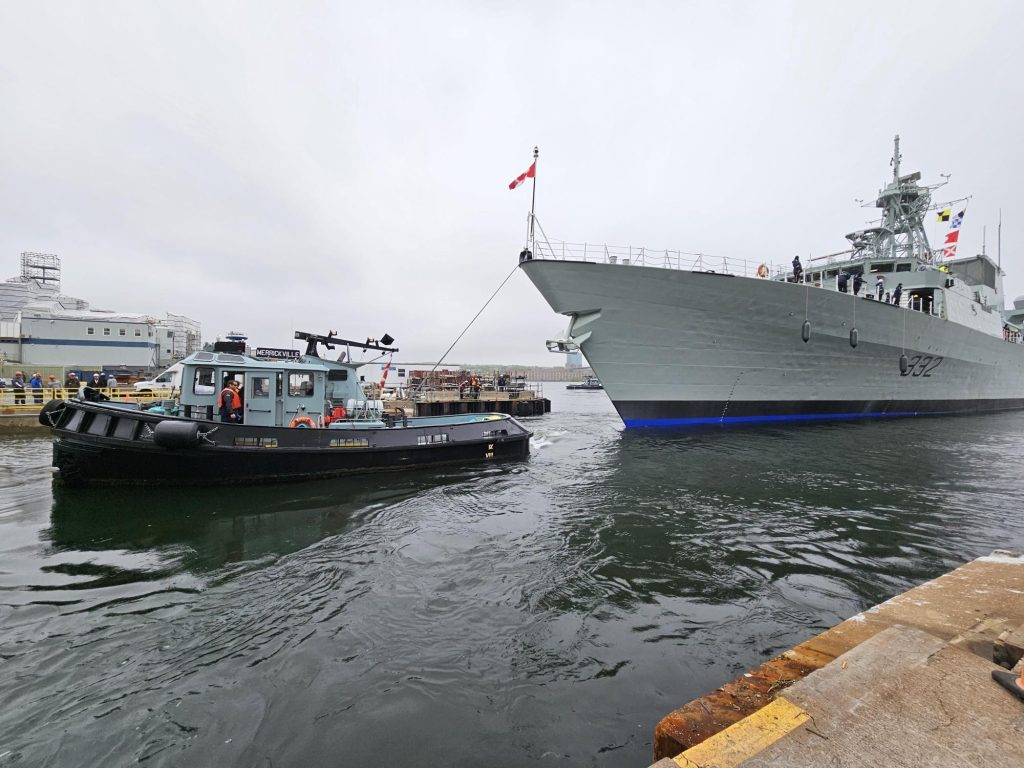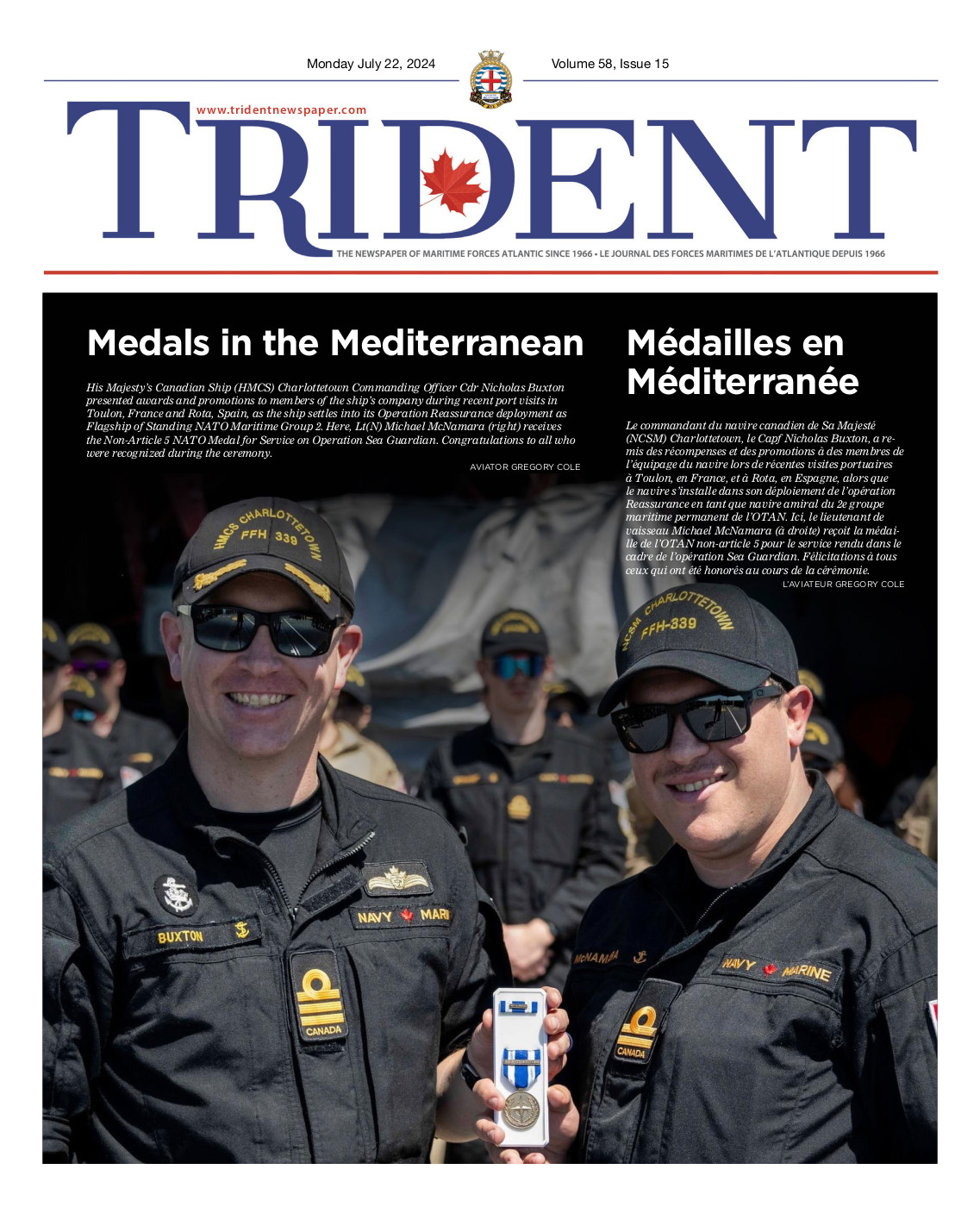
FMFCS: An inside look into docking and undocking evolutions
By Gabrielle Brunette,
Fleet Maintenance Facility Cape Scott
The first half of 2023 was incredibly busy for the Fleet Maintenance Facility Cape Scott (FMFCS) with the docking and undocking of various vessels.
In the last few months alone, our team has provided Designated Engineering Authority (DEA) Docking Services and/or executed dockings and undockings for HMCS Halifax, St. John’s, Ville de Quebec, and Windsor. Lieutenant Commander (LCdr) Shane Kavanagh, Naval Architecture Officer, expects FMFCS to have completed more than a dozen docking and undocking evolutions by the end of the year, with that number being subject to change.
“It’s busy every year,” LCdr Kavanagh said. “Even when there isn’t that much scheduled, we get busy.”
Only about a quarter of this year’s docking/undocking evolutions were initially planned. As Royal Canadian Navy (RCN) vessels age and demand more maintenance, the need for docking/undocking evolutions increase – requiring our facility to always be at the ready and adapt at a moment’s notice.
“We shift our schedule, we change priorities, and we work extra,” LCdr Kavanagh said.
Immense amounts of planning, coordination, and flexibility are required when it comes to docking and undocking vessels. Collaboration between various FMFCS departments – from Engineering to Production, is essential during the entire process.
“It really is a whole facility activity,” LCdr Kavanagh said.
The Naval Architecture section, made up of a naval architecture group, a specialty engineering group, two hull inspection groups, and non-destructive testing, work together to provide naval architecture and specialty engineering services to the fleet. One key responsibility is providing condition assessment and repair recommendations for the hull and structure of ships and submarines.
Dockings/undockings are led by the Docking Officer, who ensures the safety of vessels during the docking and undocking evolutions – from ensuring proper positioning of the vessel as it enters the Syncrolift, to monitoring tide levels and weather conditions. Additionally, the Naval Architecture section will conduct stability assessments and incline tests to ensure vessels are safe to conduct operations as required by the RCN throughout their operational cycle.
The Docking Officer also works closely with divers, who inspect the ship’s position once it has entered the Syncrolift, and the dockmaster to coordinate the docking/undocking evolutions.
On the production side, the dockmaster’s team, which is primarily made up of riggers and shipwrights, is responsible for ensuring proper positioning of the vessel as it is docked and undocked. This includes the shipwright’s building and maintaining the keel blocks that support the vessels, and plant maintenance who are responsible for maintaining and operating the syncrolift during dockings/undockings.
During the entire process, the efforts of multiple skilled individuals converge to complete these complex evolutions.
“If the lift doesn’t work, we can’t do anything. If the blocks don’t get built, we can’t do anything,” LCdr Kavanagh explained, highlighting how each individual role is important throughout the docking and undocking process.
The docking and undocking evolutions at FMFCS exemplify the dedication and expertise of our members, and their commitment to keeping RCN vessels in peak condition.
Bravo Zulu and keep up all the hard work!





